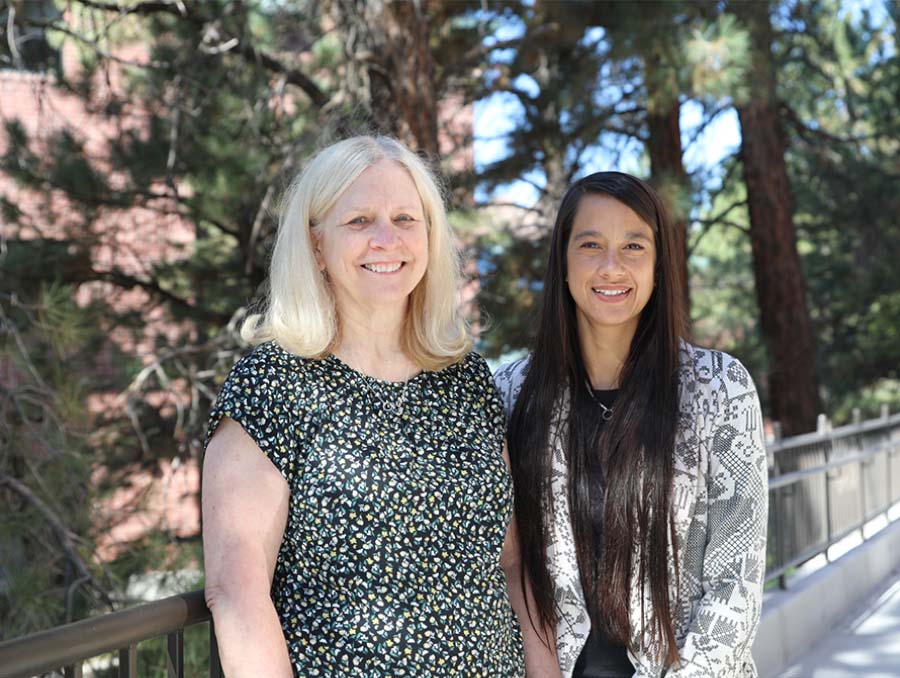Currently, there is very limited intervention research addressing instructional strategies for individuals who are deafblind. This groundbreaking new study, conducted by Chevonne Sutter, Ph.D. BCBA-D, project coordinator for the Nevada Dual Sensory Impairment Project and MaryAnn Demchak, Ph.D., BCBA-D., professor of Special Education, both in the College of Education and Human Development, evaluated the system of least prompts (SLP) to teach differentiation and selection of tangible symbols for children with complex support needs and deafblindness.
The research shows that children without formal communication could learn to communicate messages using tangible symbols. Tangible symbols are concrete symbols for children for whom more abstract symbols, such as written or spoken words, are not understood.
“All children, regardless of severity of disability, need to have a way to communicate,” Sutter, said. “Sometimes, they need very concrete symbols to do so, which could be objects or photographs.”
In this study, the first child’s tangible symbols were objects, and the second child used photographs. These concrete symbols can contribute to increased communication – both to express themselves and understand what is happening around them or to them.
The study has significant implications for children who are deafblind and their families, as well as for service providers who work with these individuals. The results of the study increase confidence that the system of least prompts (a prompt hierarchy of gradually increasing assistance) can effectively teach new skills, specifically communication skills, to individuals who are deafblind.
Children who are deafblind and their families can advocate for using the system of least prompts within systematic instruction to teach new skills. The results of this study may guide practitioners in selecting research-supported teaching practices. Practitioners should consider using the system of least prompts as an instructional method when teaching for skill acquisition.
“The results of the study contribute to what we know about evidence-based teaching strategies for children with severe, multiple disabilities that include both vision and hearing impairments,” Demchak, said.
This study also adds evidence about how to teach symbol use in the classroom, a skill integral to functional communication and essential to learning and interacting socially and with grade-level curriculum. Some children need symbols that they can touch (e.g., object symbols) so that they can understand them. Teaching children to be effective communicators, especially children with multiple, complex disabilities, including deafblindness, is essential to learning and building relationships.
“Teaching communication skills can enhance interactions with family members, peers and educators,” Demchak, said.
















